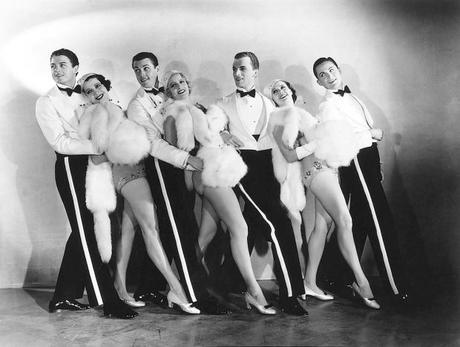
It’s hardly unheard of for a movie to be adapted for a book or for a hit play to be turned into a film; it’s a practice that’s been around for practically as long as narrative cinema has existed. For a movie to be turned into a stage play or musical is less common, and is often less commercially successful, but it’s certainly happened several times over the years. 42nd Street is a case where the story has existed in all three forms over the years: a book, a film, and a stage musical. Even over 80 years after the story of 42nd Street first came into existence, audiences continue to be drawn to it.
Recently, a traveling production of 42nd Street stopped at the Fox Theater in Detroit and, as a huge fan of the movie and other Busby Berkeley musicals, I couldn’t resist buying a ticket to check it out for myself.
When a story is adapted for a different medium, it’s almost inevitable that there will be differences between that and the original version. I have never read the book 42nd Street was based on, so I only have the movie to compare it to. If you’re a fan of the movie, the good news is that the basic story of the stage version is pretty much the same as it is for in the movie. There are some little differences here and there, but it’s basically the same aside from a slightly different ending. The stage version also features songs from other Busby Berkeley musicals like Gold Diggers of 1933 and Dames, but they add a lot to the show; they certainly don’t detract from anything.
Of course, the biggest thing I was interested in finding out is how they were going to translate those legendary musical numbers for the stage. The musical numbers are absolutely mesmerizing in the movie version, but you do have to be willing to suspend a huge amount of disbelief that they ever could have been performed on an actual stage.
So, how did they go about it? In the case of the production I saw (I can only speak for the 2015/2016 touring version) they were smart and didn’t try to completely re-enact what Busby Berkeley did. If you go to see the stage version of 42nd Street, you’ll get to hear songs like “The Shadow Waltz,” “Dames,” “I Only Have Eyes For You,” and “We’re In the Money,” but the performances bear no resemblance to how we know them from the movies. Some songs are included as musical numbers in “Pretty Lady,” the show-within-a-show of 42nd Street, while others are used to further the story. In the movie, the “Shuffle Off to Buffalo” number is the one that’s most believable as a stage number and the stage version stays pretty true to that.
If you have the DVD for Gold Diggers of 1933, it includes a featurette about how 42nd Street transitioned from book to film to stage. This includes clips of interviews with people who were involved with the 2001 Broadway revival and they talk about how they did a more literal Busby Berkeley homage in one song. Although I thought that idea was really clever, it just wasn’t part of the production I went to.
However, just because most of the musical numbers in the stage version aren’t exactly what we know them to be from films, that doesn’t mean they’re any less dazzling. The audience was just as enthralled by the musical numbers as we’re supposed to believe the audience in the movie was; only they’re actually meant to be performed on a real stage. In the production I saw, the big “42nd Street” number was an absolute showstopper; a truly remarkable way to bring the show to a close. The sheer amount of energy that went into that number was just incredible. If you’re a fan of Busby Berkeley musicals and ever have the chance to see the stage version, I very highly recommend it. The show is a very loving tribute not only to 42nd Street, but to Busby Berkeley musicals in general.
